Mark Twain, a pen name for Samuel Clemens, is an acclaimed figure of American literature. His iconic works have enriched the literary world with their humor, wit, and poignant social commentary. Twain’s versatile writing style encompassed a variety of genres, painting a vivid picture of 19th-century American life and human nature.
This blog post takes a closer look at some of his best-known books and the timeless wisdom they convey. We’ll journey through the backwaters of the Mississippi, witness the American frontier, and explore human folly and grandeur through Twain’s remarkable storytelling lens. Let’s dive into the riveting world of Mark Twain’s literature.
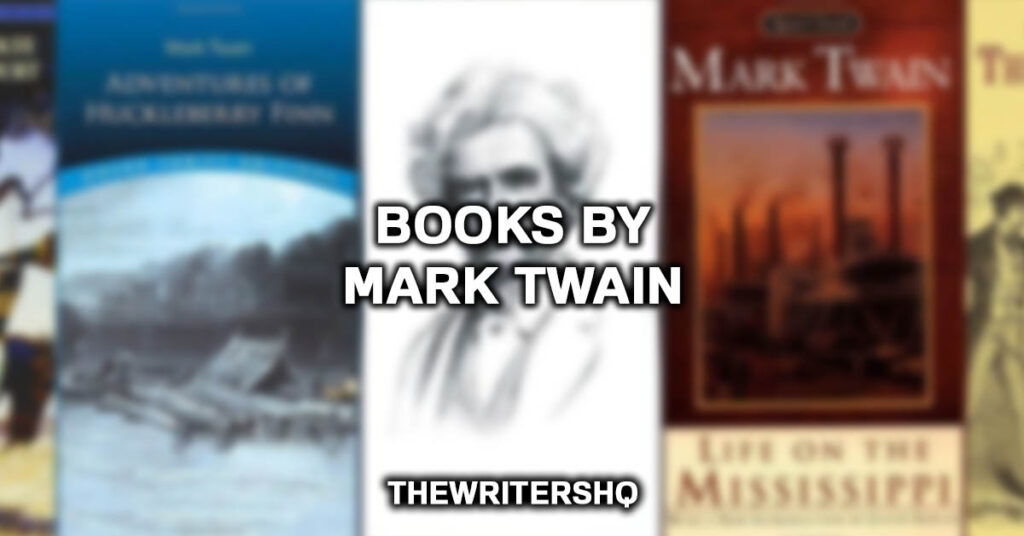
Who Was Mark Twain?
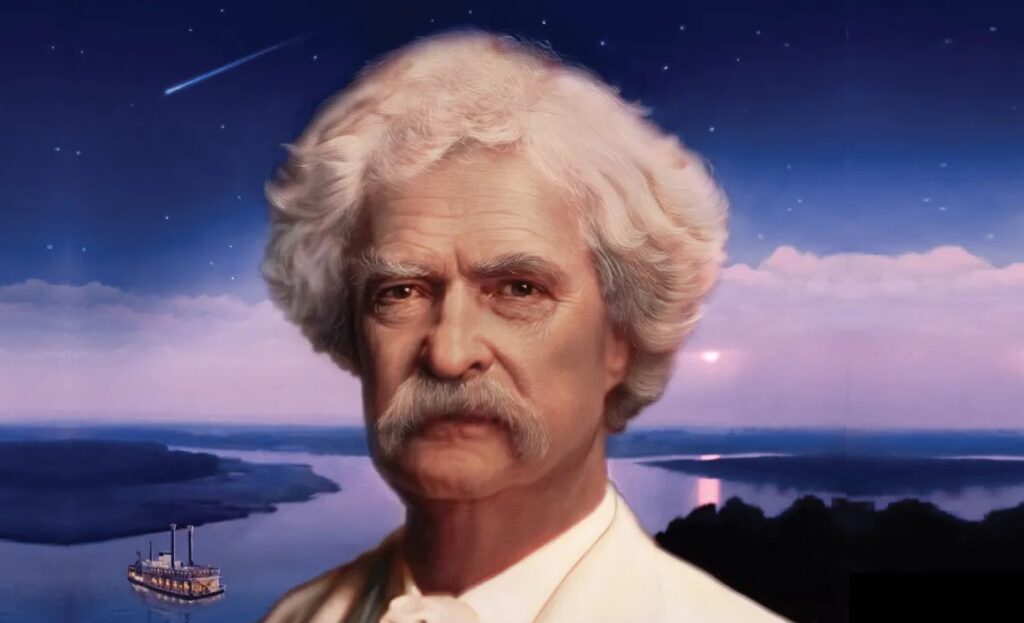
Mark Twain, whose real name was Samuel Langhorne Clemens, was a celebrated American author, humorist, and lecturer born on November 30, 1835. Known for his wit, satire, and keen social commentary, Twain wrote about the rapidly changing America of the 19th century.
Quick Fact: His works are noted for their insightful depiction of human nature and society, as well as their distinctive, colloquial style.
How Many Books Did Mark Twain Write?
Mark Twain authored more than 30 books in his lifetime, and his work also includes countless short stories, essays, and lectures. His prolific output ranges from travelogues and autobiographies to satires and novels, establishing him as one of the most versatile and influential writers in American literature.
What Are the Best Books By Mark Twain?
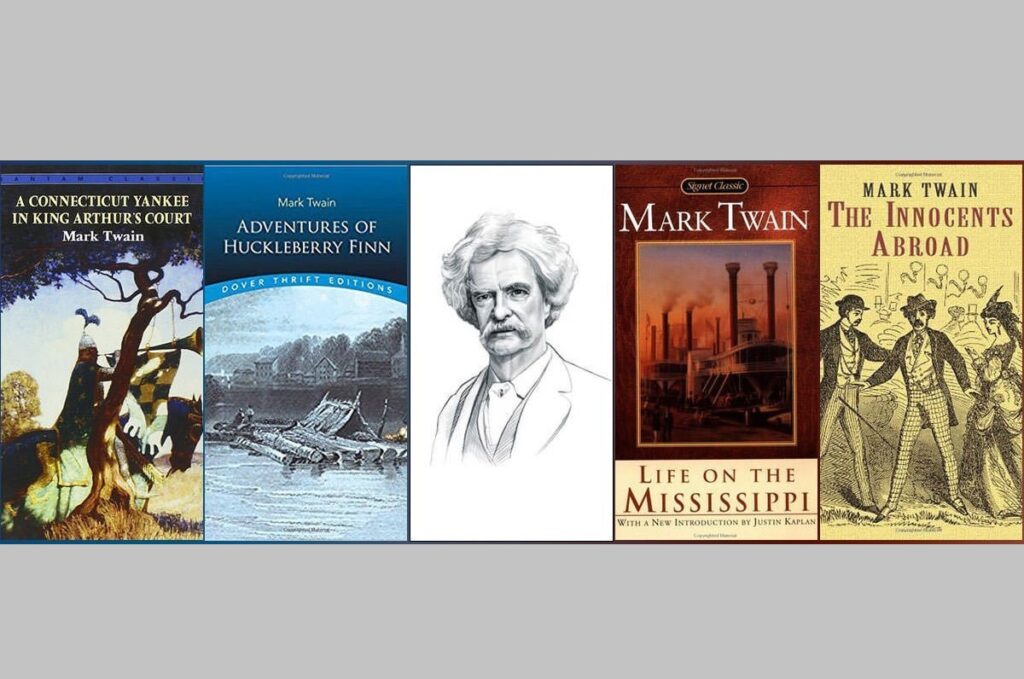
While subjective, here are some of Mark Twain’s most influential and highly regarded works:
- “The Adventures of Tom Sawyer”: A classic story of young boyhood, capturing the thrill of adventure, the fear of danger, and the absurdity of adults.
- “Adventures of Huckleberry Finn”: Often considered Twain’s masterpiece, this novel explores themes of freedom, society, and the often hypocritical attitudes of the time.
- “A Connecticut Yankee in King Arthur’s Court”: A satirical critique of romanticized chivalry and the injustices of 19th-century society.
- “The Innocents Abroad”: A humorous, insightful account of Twain’s travels through Europe and the Holy Land.
Certainly, here is a more comprehensive list of Mark Twain’s major works:
- “The Celebrated Jumping Frog of Calaveras County” (1867)
- “The Innocents Abroad” (1869)
- “Roughing It” (1872)
- “The Gilded Age: A Tale of Today” (1873)
- “Sketches, New and Old” (1875)
- “The Adventures of Tom Sawyer” (1876)
- “A Tramp Abroad” (1880)
- “The Prince and The Pauper” (1881)
- “Life on the Mississippi” (1883)
- “Adventures of Huckleberry Finn” (1884)
- “A Connecticut Yankee in King Arthur’s Court” (1889)
- “Merry Tales” (1892)
- “The American Claimant” (1892)
- “Pudd’nhead Wilson” (1894)
- “Tom Sawyer Abroad” (1894)
- “Personal Recollections of Joan of Arc” (1896)
- “Tom Sawyer, Detective” (1896)
- “Following the Equator” (1897)
- “The Man That Corrupted Hadleyburg” (1899)
- “A Double Barrelled Detective Story” (1902)
- “A Horse’s Tale” (1907)
- “The Mysterious Stranger” (1916, posthumously published)
- “The Adventures of Thomas Jefferson Snodgrass” (1928, posthumously published)
- “Letters from the Earth” (1962, posthumously published)
summary of every mark twain book
1. “The Celebrated Jumping Frog of Calaveras County” (1867)
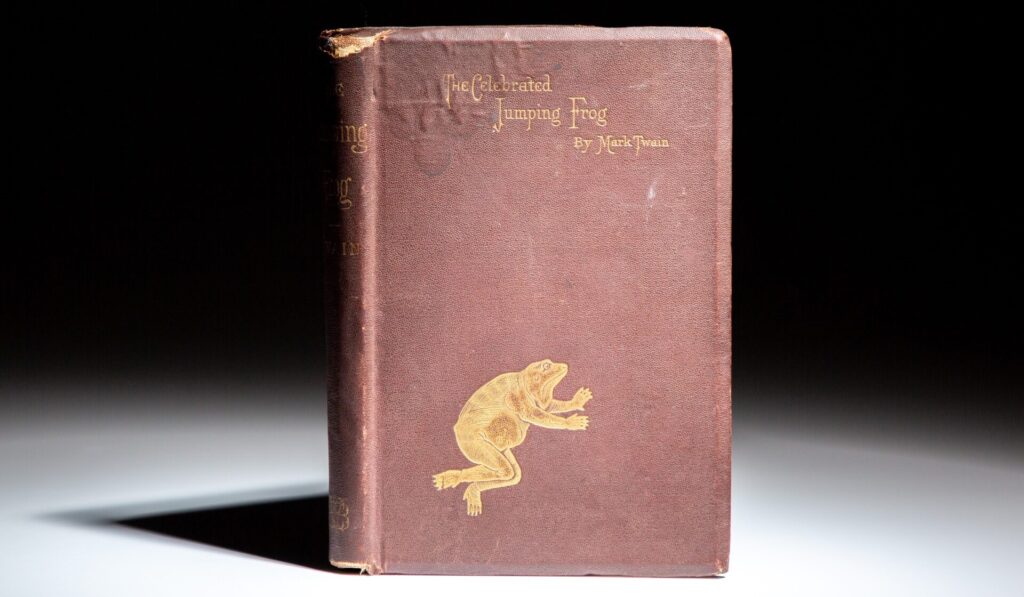
Twain’s first published book features a collection of short stories narrated with the author’s trademark humor and witticism. The titular story narrates the tale of a notorious gambler, Jim Smiley, who is always willing to bet on anything that offers the prospect of a wager, even when it comes to a leaping frog.
However, his cunning plans go awry when his opponent plays a sly trick on him. The collection brilliantly captures the vibrancy and nuances of American life in the 19th century, painting a detailed picture of society, culture, and human nature.
2. “The Innocents Abroad” (1869)
The book is a travelogue and a memoir of Twain’s adventures during a voyage to Europe and the Holy Land. As an innocent abroad, Twain juxtaposes the grand historical sites of Europe with American tourist naivety, exposing the folly and pretension in both.
Quick Fact: Filled with satire and social commentary, the book showcases Twain’s sharp observation and his comedic critique of American and European prejudices and customs. It’s a wry and often biting critique of old-world traditions and contemporary New World arrogance alike.
3. “Roughing It” (1872)
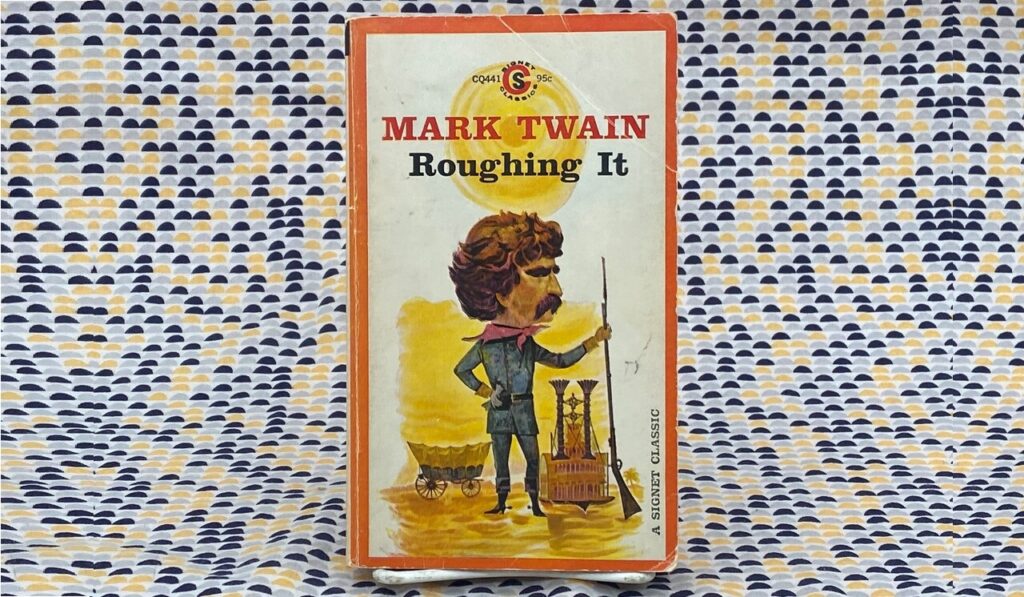
This semi-autobiographical novel covers Twain’s journey from Missouri to Nevada, his various jobs in the West, his exploration of the Sandwich Islands (Hawaii), and his ensuing reflections on the American spirit. “Roughing It” offers insight into Twain’s early life, filled with humor, travel, and frontier adventure.
It provides a satirical look at the rough-and-tumble life in the Wild West and the cultural shock of encountering diverse ways of life. The book is both a comedic romp and a social critique of American expansionism and the myths of the Wild West.
4. “The Gilded Age: A Tale of Today” (1873)
Co-authored with Charles Dudley Warner, the novel is a critique of American society in the post-Civil War era. The term “Gilded Age,” coined in the book, refers to the period in American history marked by rapid economic growth and conspicuous display of wealth, which hid the severe social problems of the time.
The story satirizes greed, political corruption, and the pursuit of wealth without moral constraints. Through the characters of the Hawkins family and the opportunistic speculator Philip Sterling, Twain and Warner highlight the ethical dilemmas of a society obsessed with material gain.
5. “Sketches, New and Old” (1875)
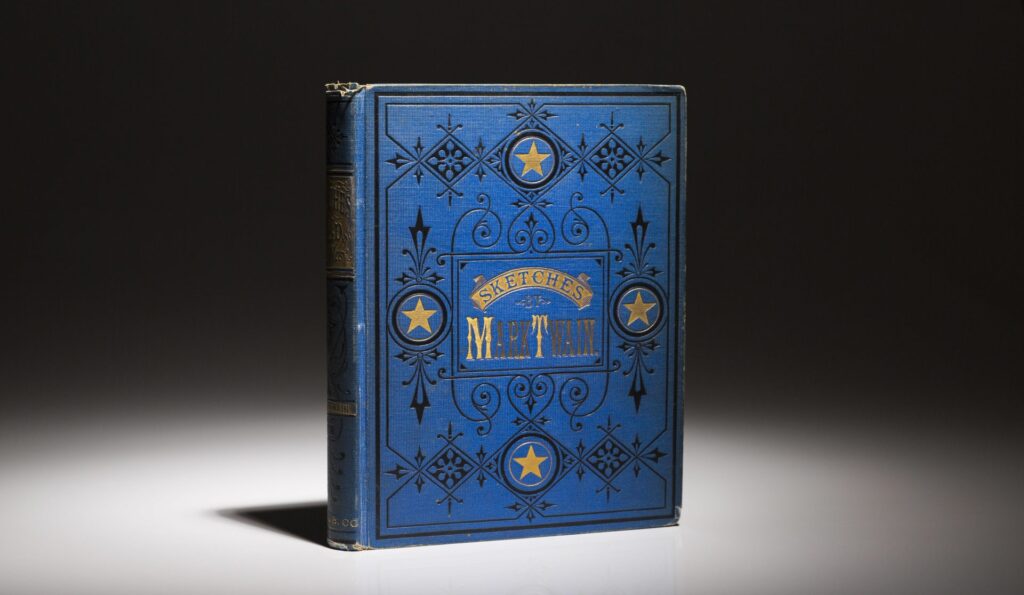
A collection of 63 writings that includes short fiction, sketches, speeches, and anecdotes. Some of the more renowned pieces include “The Notorious Jumping Frog of Calaveras County” and “A Ghost Story,” both of which showcase Twain’s ability to mold language, use dialect, and integrate humor.
Twain employs satire, wit, and insightful social commentary in his sketches, making this an enjoyable and thought-provoking read.
6. “The Adventures of Tom Sawyer” (1876)
This is the delightful tale of Tom Sawyer, a lively, mischievous boy growing up in the fictional town of St. Petersburg, Missouri, along the Mississippi River. Through Tom’s adventures and misadventures pirate escapades, treasure hunting, witnessing a murder, and attending his own funeral Twain masterfully brings childhood nostalgia to life.
Quick Fact: This novel is not just a boys’ adventure story but also a precise and affectionate portrayal of American boyhood and society in the mid-19th century.
7. “A Tramp Abroad” (1880)
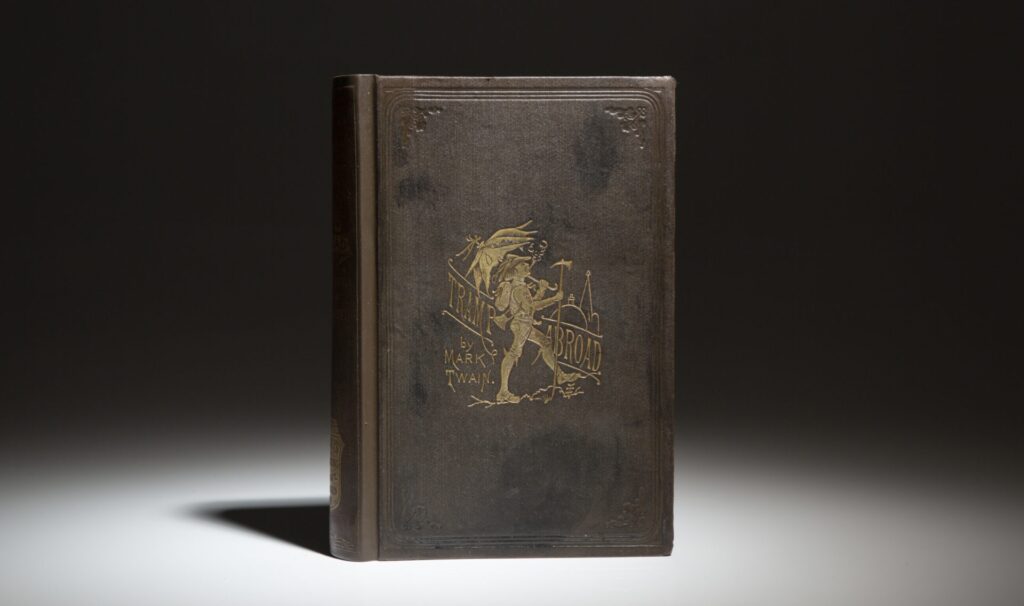
In this humorous travelogue, Twain recounts his semi-fictional “tramp” through Europe. It parodies the traditional travel book as Twain mocks various American and European attitudes and takes a comedic, often irreverent, view of the tourist experience. It offers a mix of autobiography, tall tales, and social satire wrapped up in Twain’s observations on cultural and national differences.
8. “The Prince and The Pauper” (1881)
Set in 16th-century England, the novel explores the lives of two boys who are identical in appearance: Tom Canty, a pauper, and Prince Edward, the son of King Henry VIII. When they swap lives, they learn the grass is not always greener on the other side.
Through this captivating tale, Twain critiques the inequalities and injustices resulting from birthright and social status. It’s a poignant exploration of identity, class disparity, and the nature of privilege.
9. “Life on the Mississippi” (1883)
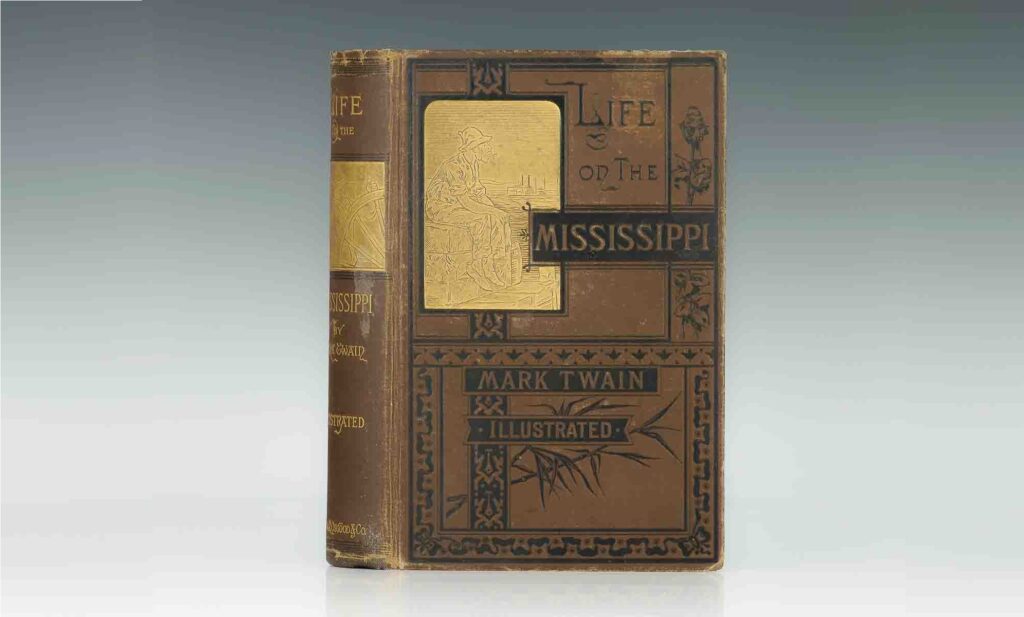
A blend of travel writing, memoir, and social commentary, Twain recounts his youthful days as a cub pilot on a steamboat navigating the Mississippi River. The book vividly describes the mighty river, the towns along its banks, and the unique way of life of the people who lived there and traveled its waters.
It’s an illuminating narrative that reveals as much about the author as it does about the American life of the time.
10. “Adventures of Huckleberry Finn” (1884)
Considered Twain’s masterpiece, this novel follows Huckleberry Finn, a boy escaping an abusive father, and Jim, a runaway slave. As they travel the Mississippi River, they encounter various characters and experiences, navigating moral dilemmas and societal issues along the way.
It’s a profound exploration of friendship, freedom, racism, and moral growth, all depicted through the innocent eyes of Huck Finn.
11. “A Connecticut Yankee in King Arthur’s Court” (1889)
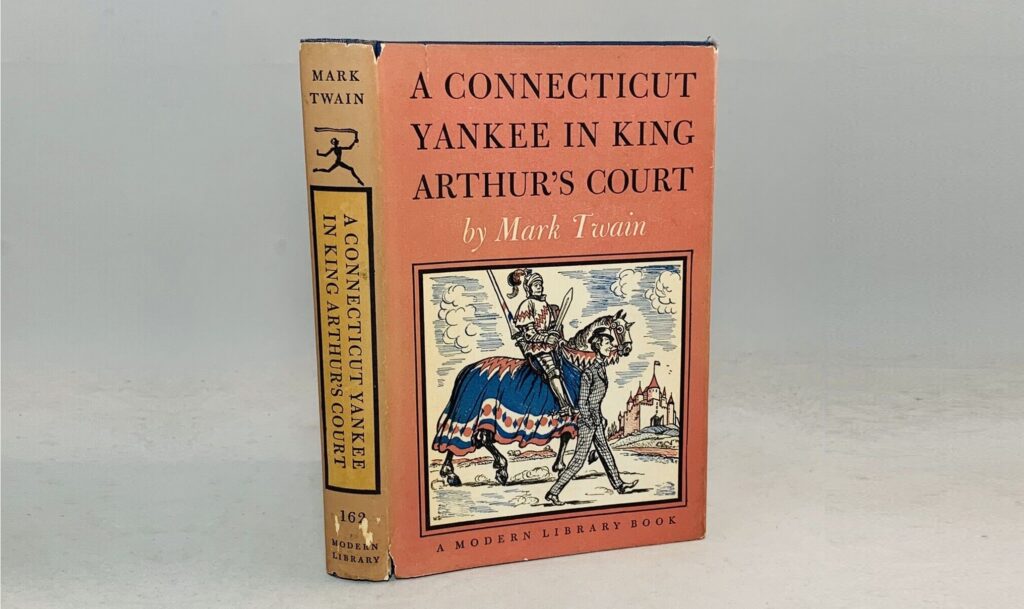
The story revolves around a practical and ingenious Yankee, Hank Morgan, who is transported back in time to Arthurian England. Using his modern knowledge, he tries to modernize the past. The book is a profound commentary on the social and political institutions of the time.
Quick Fact: It’s a satirical critique of romanticized chivalry, oppression by the ruling class, and the conflict between science and superstition.
12. “Merry Tales” (1892)
A collection of 27 stories that demonstrate Twain’s storytelling prowess. These stories run the gamut from humorous to serious, satirical to fantastical, each capturing a different aspect of Twain’s wide-ranging talent. Twain’s astute observations of human nature and his command over humor and wit are on full display in this collection.
13. “The American Claimant” (1892)
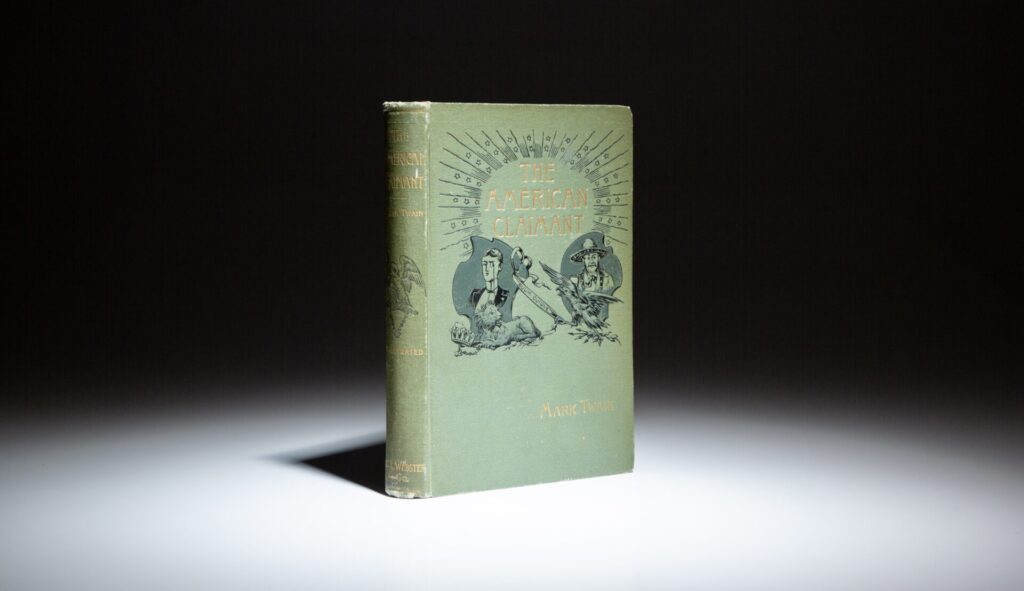
The novel follows the eccentric Earl of Rossmore who, after meeting a stranger claiming to be an American born into British aristocracy, becomes embroiled in an identity swap. The book is a satire of American and British aristocracy and the value society places on lineage and titled statuses.
14. “Pudd’nhead Wilson” (1894)
Set in the fictional Missouri frontier town of Dawson’s Landing, the book explores the tragic consequences of an infant’s switch by a light-skinned slave desperate to protect her son from the horrors of slavery. The title character, a minor figure in the drama, eventually unravels the truth through his hobby of fingerprinting. The story is a searing indictment of racial inequality.
15. “Tom Sawyer Abroad” (1894)
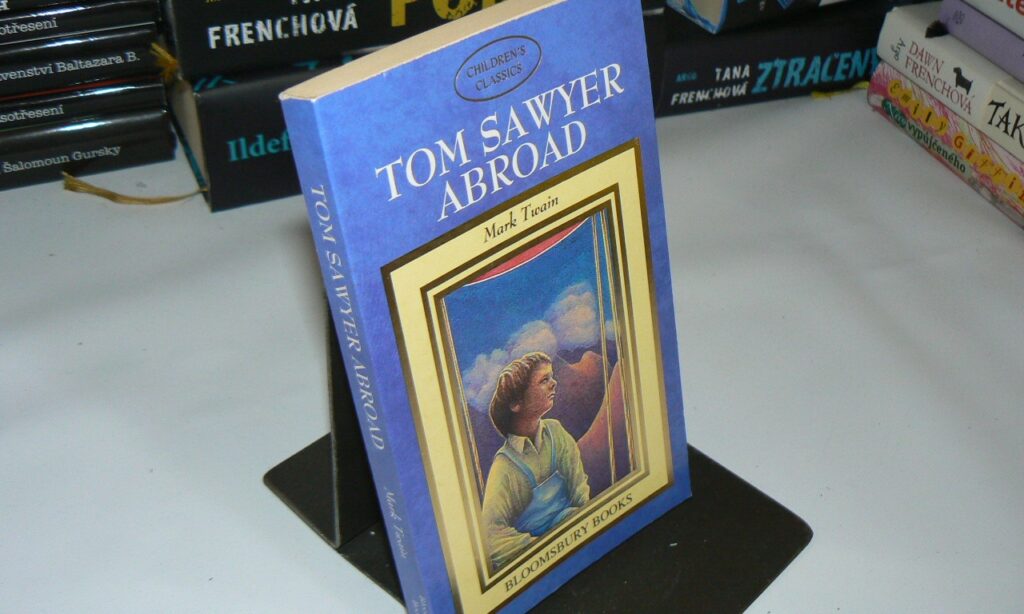
A sequel to “The Adventures of Tom Sawyer,” this novel sends Tom, Huck Finn, and Jim on an unlikely balloon ride to Africa. Encountering various adventures, it satirizes popular adventure novels of the time, including those of Jules Verne. It combines the charm of Tom Sawyer with the wry satire of Mark Twain.
16. “Personal Recollections of Joan of Arc” (1896)
Twain considered this historical novel his best and most important work. The story is a retelling of Joan of Arc’s life, as seen through the eyes of a fictional character, Sieur Louis de Conte, Joan’s page and secretary. The book is a passionate celebration of Joan of Arc’s courage, her remarkable achievements, and her canonization as a saint.
17. “Tom Sawyer, Detective” (1896)
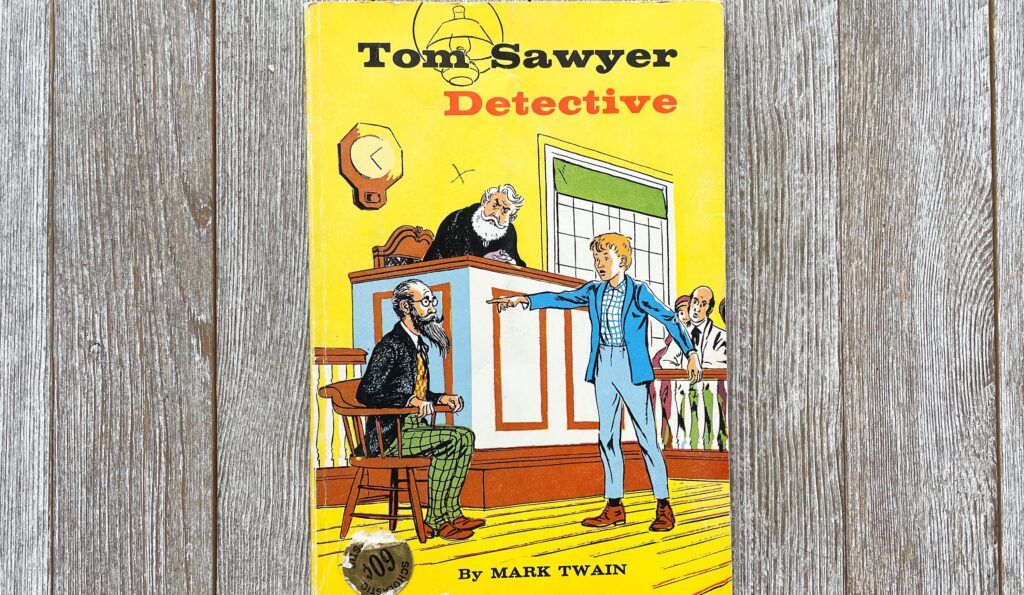
Another sequel to “The Adventures of Tom Sawyer,” this lesser-known novel portrays Tom and Huck as detectives trying to solve a complex murder case. The story cleverly intertwines humor, suspense, and Twain’s critique of social and moral issues of his time.
18. “Following the Equator” (1897)
This is Twain’s final travel book, a chronicle of his circumnavigation of the globe, particularly his journey across the British Empire. With his characteristic humor and wit, Twain critiques imperialism while also offering observations about various cultures.
Quick Fact: The book reflects Twain’s transition from humorist to moralist, from entertainer to profound philosopher, and serves as an insightful social commentary on the human condition.
19. “The Man That Corrupted Hadleyburg” (1899)
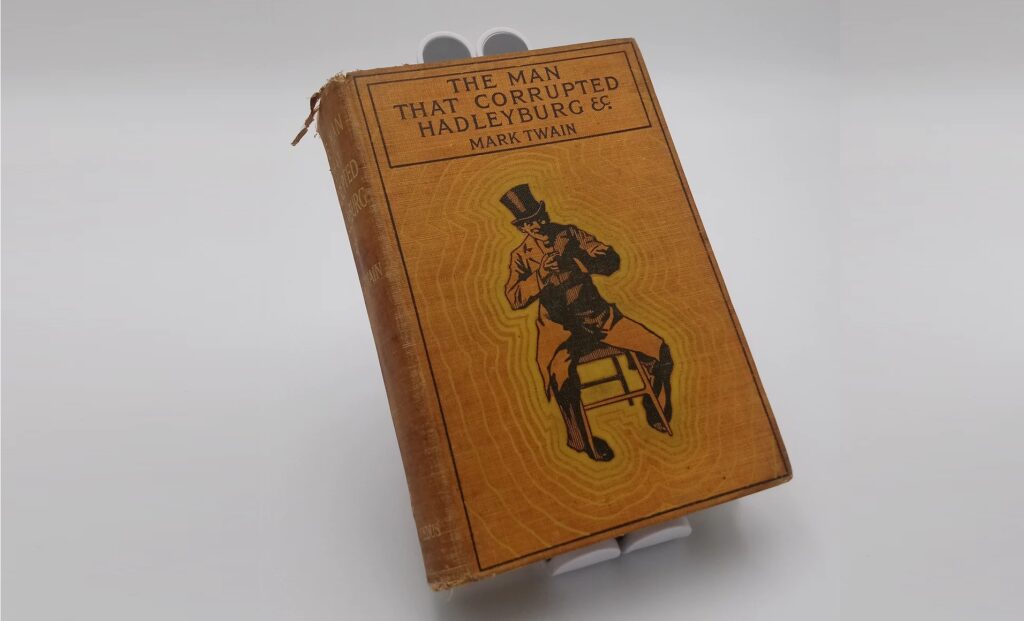
This novella tells the story of Hadleyburg, a town known for its unimpeachable honesty, but whose reputation is derailed by a mysterious stranger. As revenge for an offense committed by the town, the stranger plants a scheme that gradually reveals the townspeople’s greed and dishonesty.
The story is a sharp satire on human nature, focusing on themes of hypocrisy, corruption, and the vanity of human wishes.
20. “A Double Barrelled Detective Story” (1902)
The novel is a unique addition to Twain’s work, combining elements of mystery, romance, and satire. The protagonist, Archy Stillman, with an incredible sense of smell, is involved in tracking a crime and, in turn, becomes embroiled in a complex plot of love and revenge.
Twain plays with the conventions of the detective story genre and provides a satirical critique of the human character.
21. “A Horse’s Tale” (1907)
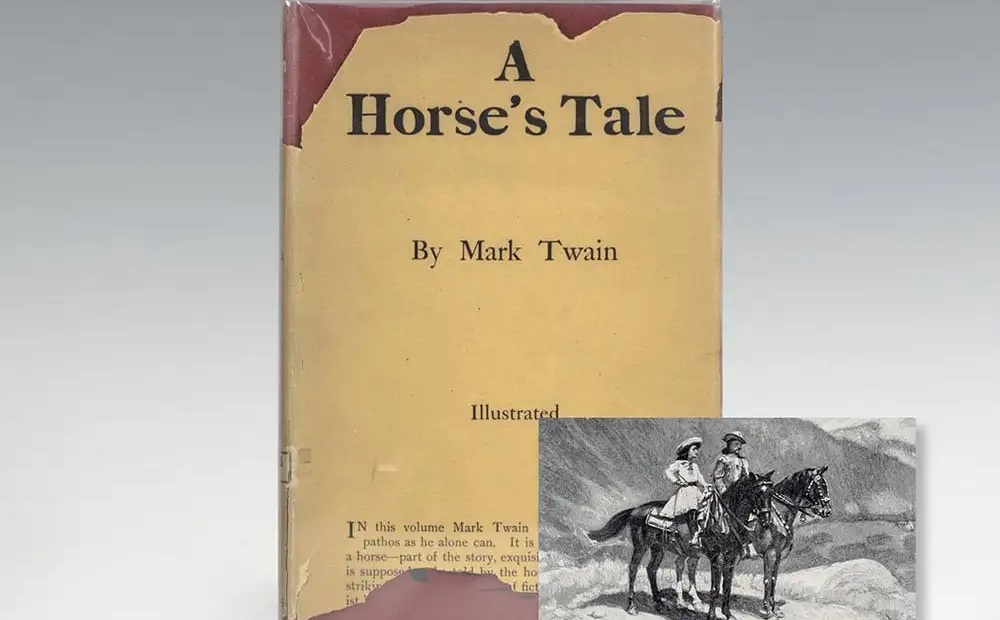
This is a story told from the perspective of Soldier Boy, Buffalo Bill’s favorite horse, and explores the relationship between animals and their human companions. It is a charming, heartwarming, and occasionally poignant tale that touches on themes of loyalty, love, sacrifice, and kindness.
22. “The Mysterious Stranger” (1916, posthumously published)
This philosophical novella follows the supernatural visitor, Satan, who, devoid of human sentiment, provides young apprentices with lessons on morality, existence, and the nature of reality. The story explores heavy themes such as free will, determinism, evil, and the arbitrary nature of human morality.
23. “The Adventures of Thomas Jefferson Snodgrass” (1928, posthumously published)

This series of three humorous letters are written in vernacular and parodies the style of travel letters popular at the time. These letters depict the adventures and misadventures of the titular character, Thomas Jefferson Snodgrass, as he travels, presenting Twain’s comedic and satirical flair.
24. “Letters from the Earth” (1962, posthumously published)
This collection of essays and stories presents Twain’s posthumously published reflections on religion and society. The title piece is a series of observations about Earth, its inhabitants, and religious customs, written from the perspective of Satan. The work is marked by Twain’s characteristic wit, satire, and sharp critique of human nature and institutions.
What was Mark Twain’s most famous literary work?
Mark Twain’s most famous work is undoubtedly “The Adventures of Huckleberry Finn” (1884). The novel is a significant piece of American literature, often hailed as the “Great American Novel.” Twain’s deft blending of humor, social criticism, vivid characterization, and evocative depiction of time and place results in a novel of enduring popularity and relevance.
It is a profound exploration of friendship, freedom, racism, and moral growth, all depicted through the innocent eyes of its protagonist, Huck Finn. The novel is notable for its innovative use of language, Twain employed regional dialects and colloquial speech to bring his characters and the setting to life, which was groundbreaking at the time.
“The Adventures of Huckleberry Finn” continues to be taught in schools and universities worldwide, underscoring its status as a cornerstone of American literature.
What are Mark Twain’s books in order?
Here is a list of Mark Twain’s major works in chronological order of publication:
- “The Celebrated Jumping Frog of Calaveras County” (1867)
- “The Innocents Abroad” (1869)
- “Roughing It” (1872)
- “The Gilded Age: A Tale of Today” (1873, co-authored with Charles Dudley Warner)
- “Sketches, New and Old” (1875)
- “The Adventures of Tom Sawyer” (1876)
- “A Tramp Abroad” (1880)
- “The Prince and The Pauper” (1881)
- “Life on the Mississippi” (1883)
- “Adventures of Huckleberry Finn” (1884)
- “A Connecticut Yankee in King Arthur’s Court” (1889)
- “Merry Tales” (1892)
- “The American Claimant” (1892)
- “Pudd’nhead Wilson” (1894)
- “Tom Sawyer Abroad” (1894)
- “Personal Recollections of Joan of Arc” (1896)
- “Tom Sawyer, Detective” (1896)
- “Following the Equator” (1897)
- “The Man That Corrupted Hadleyburg” (1899)
- “A Double Barrelled Detective Story” (1902)
- “A Horse’s Tale” (1907)
- “The Mysterious Stranger” (1916, posthumously published)
- “The Adventures of Thomas Jefferson Snodgrass” (1928, posthumously published)
- “Letters from the Earth” (1962, posthumously published)
How many Tom Sawyer books did Mark Twain write?
Mark Twain wrote four books that prominently feature the character Tom Sawyer:
- “The Adventures of Tom Sawyer” (1876) is the first and most famous of these, introducing the character of Tom Sawyer and his friends in the fictional town of St. Petersburg, Missouri.
- “Adventures of Huckleberry Finn” (1884) is often considered a sequel to “The Adventures of Tom Sawyer,” even though the focus of the novel is more on Huck Finn’s adventures. However, Tom Sawyer plays a significant role, especially in the latter part of the book.
- “Tom Sawyer Abroad” (1894) is a lesser-known sequel to “The Adventures of Tom Sawyer,” and it involves Tom, Huck, and their friend Jim on a fanciful and satirical journey to Africa via a hot air balloon.
- “Tom Sawyer, Detective” (1896) is another sequel where Tom and Huck become detectives and try to solve a murder mystery.
What impact has Mark Twain’s work had on American literature?
Mark Twain is considered one of the greatest writers in American history. His works have significantly influenced American literature, shaping the genre in terms of themes, style, and language. Twain’s use of colloquial language and regional dialects in his work was groundbreaking.
In particular, “The Adventures of Huckleberry Finn” is often described as the first truly American novel, as Twain abandoned formal English and adopted a vernacular style. This broke conventions and opened the door for the recognition of other voices and dialects in literature.
His characters, like Huck Finn and Tom Sawyer, are among the most iconic in American literature. Furthermore, his use of humor, satire, and social criticism offered a pointed critique of society that resonated with many and provided a model for future authors.
Did Mark Twain write under any other names?
Yes, Mark Twain is the most famous pen name of Samuel Langhorne Clemens. Early in his writing career, he also used the pseudonym “Thomas Jefferson Snodgrass” for a series of humorous letters. He chose “Mark Twain” from a term used by riverboat workers to measure depth, meaning “two fathoms,” symbolizing his deep connection to the Mississippi River.
Why are Mark Twain’s books considered classics?
Mark Twain’s books are considered classics because of their timeless themes, memorable characters, and innovative use of language and narrative style. His works offer profound insights into human nature and social norms, which remain relevant today.
Furthermore, Twain’s unique blend of humor, satire, and sharp social commentary continues to resonate with readers. His portrayal of America’s landscapes, culture, and vernacular speech form an invaluable historical record.
Quick Fact: His novels, especially “The Adventures of Tom Sawyer” and “Adventures of Huckleberry Finn,” have become integral parts of American cultural heritage and are still widely read and studied.
What are some key themes in Mark Twain’s works?
Twain’s work often deals with themes of freedom, innocence, and morality, as well as the hypocrisy of society and human nature. His writing also highlights the contrasts between reality and perception, often employing satire to expose human follies.
Slavery and racism are prevalent themes in “Adventures of Huckleberry Finn,” while “The Prince and The Pauper” examines class disparity and identity. Additionally, Twain often explores the concept of the American Dream and critiques the pursuit of progress at the cost of morality and humaneness.
How did Mark Twain’s personal life influence his writing?
His personal experiences profoundly influenced Mark Twain’s writing. His childhood years in Hannibal, Missouri, inspired the settings and characters in “The Adventures of Tom Sawyer” and “Adventures of Huckleberry Finn.” His experience as a riverboat pilot on the Mississippi provided material for “Life on the Mississippi” and influenced his pen name.
Twain’s travels around the world are documented in his travel books like “The Innocents Abroad” and “A Tramp Abroad.” The death of his wife and children deeply impacted him, reflecting a shift in his later works towards a more pessimistic and cynical view of humanity.
In conclusion, Mark Twain’s work is integral to American literature. His vivid characters, innovative narrative style, and trenchant social commentary have left an indelible mark. He brought American vernacular speech and a uniquely American perspective to the world of literature, breaking conventions and opening new pathways for writers to come.
His books continue to be celebrated for their humor, wisdom, and irreverent exploration of society and human nature. As we reflect on Mark Twain’s work, we appreciate not only the literary accomplishments of a great writer but also the insightful mirror he held up to American society.
